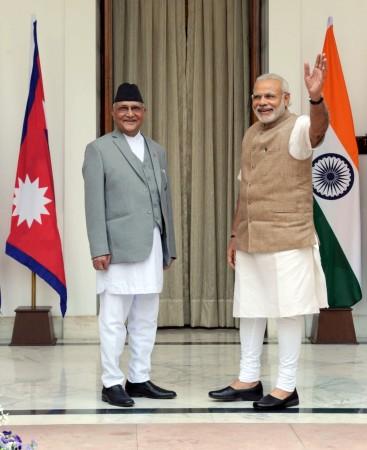
In a recent visit to China, Nepal's Prime Minister K.P. Sharma Oli told Chinese Premier Li Keqiang that he had "come to China with a special mission," Reuters reported March 21.
With no clarity on what exactly the discussions were about, media reports were rife on Nepal wanting to connect itself physically with its neighbours, apart from the stated objective of strengthening relations while lessening its dependence on India.
Hou Yanqi, deputy head of the Chinese foreign ministry's Asia Division, told Reuters that Oli raised the possibility of two rail lines, one within the country and other connecting the two neighbours.
The news came in the backdrop of a recent five-month border blockade Nepal underwent since adopting a new constitution. Supplies of fuel and medicines were affected badly during the protests, which the country constantly accused of being supported by India.
While the blockade ended last month and Reuters reporting the supply still being limited, the Chinese talks seem to collide with an Indian announcement earlier in the week of building five new rail lines in Nepal, which does not have a railway system.
Though Nepal's two big neighbours appear to be competing at the outset, the Mint reported, citing an Indian government official, that the Indian plan had nothing to do with that of the Chinese.
"We have always focused on improving connectivity with all our neighbours. This is part of that process," the official told, pointing to statements made by Prime Minister Narendra Modi at several occasions.
In a regional meet of seven South Asian nations in Nepal's Pokhara city last week, India's Foreign Minister Sushma Swaraj had pressed for greater physical connectivity among all the nations.
Rail Projects
While a rail line link between Raxaul (Bihar) in India to Birgunj in Nepal is operational since 2005, two more under construction lines are expected to be readied by 2018, the Mint reported. The official also confirmed that three more new rail lines will be approved soon.
The contiguous area of northern plains partitioned between the countries India and Nepal offers easy extension of railway lines. Several of India's rail lines in the states of Uttar Pradesh and Bihar often go up to the borders of Nepal. However, land acquisition on both sides has stymied the completion of those lines, according to the Mint report.
Reuters reported that China's rail projects with Nepal are rather subject to geographical and technical feasibility, apart from financing ability. With the Himalayas to the north of Nepal acting as a barrier to access China, the farthest the Chinese rails could get in the near future is the borders of Nepal, it said.
Rail link between the Tibetan city of Shigatse and Gyirong on the Nepal border is already under consideration, Yanqi told Reuters. She added: "We believe that far in the future the two countries will be connected by rail."
However, China's government would encourage Chinese firms to look at the internal rail plan connecting three important cities within Nepal.
"Offering landlocked Nepal greater connectivity with the world will increase the bond between the two countries. India's influence will be greater as economic linkages with Nepal will be deeper," Biswajit Dhar, a professor specialising in trade at the New Delhi-based Jawaharlal Nehru University, told the Mint.
If physical connectivity in South Asia increases, there can be links with high-growth South-east Asian economies in the future, Dhar added.

















